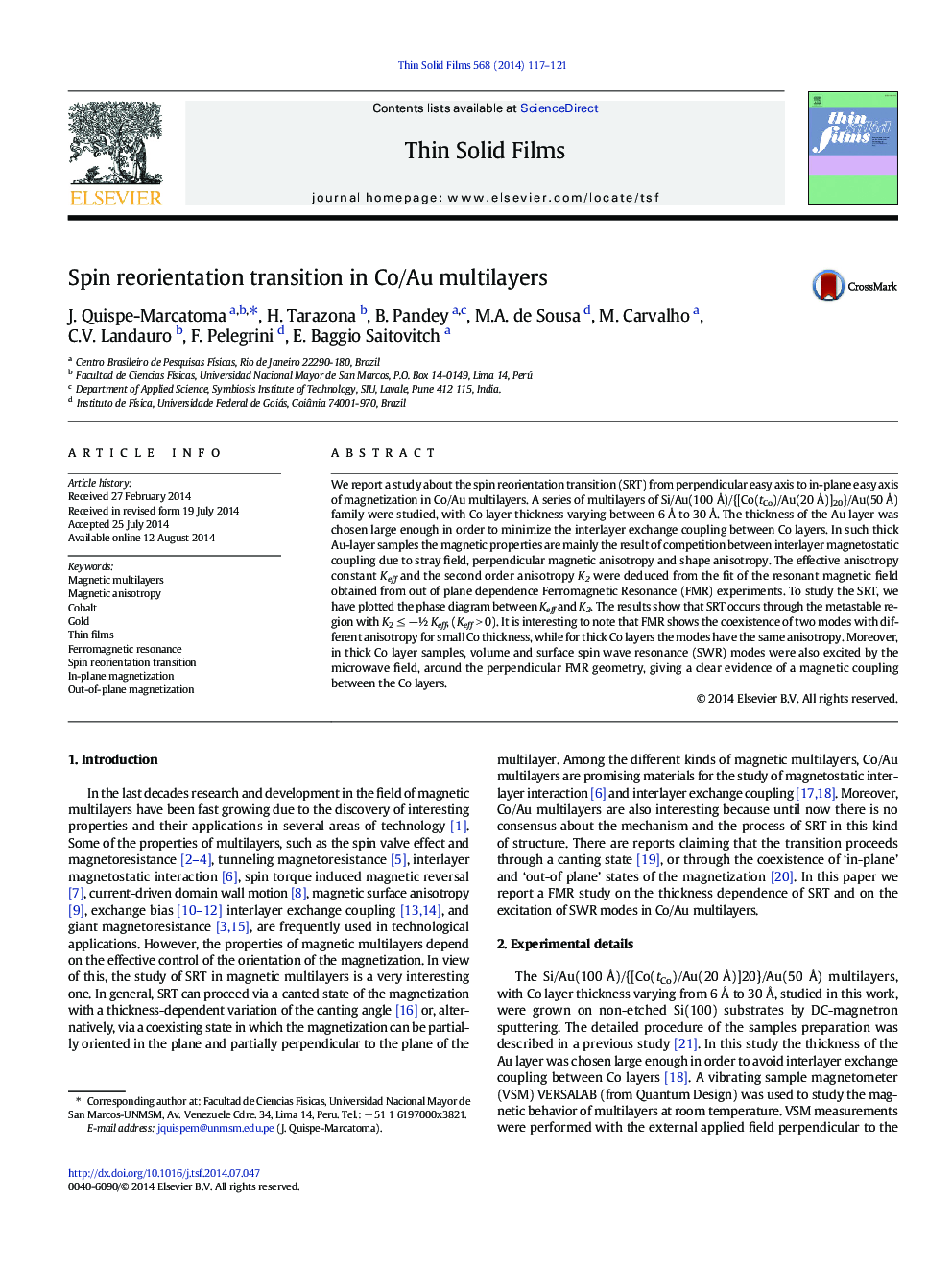| Article ID | Journal | Published Year | Pages | File Type |
|---|---|---|---|---|
| 1665357 | Thin Solid Films | 2014 | 5 Pages |
•Co/Au multilayers with varying Co layer thickness are prepared by DC-magnetron sputtering.•The spin reorientation transition (SRT) and flipping of magnetic moment are studied.•Effective anisotropy constant (K) and 2nd order anisotropy constant (K2) are calculated.•K Vs K2 plot showed that SRT occurs through the metastable region with K2 ≤ −½ K, (K > 0).•Ferromagnetic Resonance spectra showed the coexistence of two resonance modes.
We report a study about the spin reorientation transition (SRT) from perpendicular easy axis to in-plane easy axis of magnetization in Co/Au multilayers. A series of multilayers of Si/Au(100 Å)/{[Co(tCo)/Au(20 Å)]20}/Au(50 Å) family were studied, with Co layer thickness varying between 6 Å to 30 Å. The thickness of the Au layer was chosen large enough in order to minimize the interlayer exchange coupling between Co layers. In such thick Au-layer samples the magnetic properties are mainly the result of competition between interlayer magnetostatic coupling due to stray field, perpendicular magnetic anisotropy and shape anisotropy. The effective anisotropy constant Keff and the second order anisotropy K2 were deduced from the fit of the resonant magnetic field obtained from out of plane dependence Ferromagnetic Resonance (FMR) experiments. To study the SRT, we have plotted the phase diagram between Keff and K2. The results show that SRT occurs through the metastable region with K2 ≤ −½ Keff, (Keff > 0). It is interesting to note that FMR shows the coexistence of two modes with different anisotropy for small Co thickness, while for thick Co layers the modes have the same anisotropy. Moreover, in thick Co layer samples, volume and surface spin wave resonance (SWR) modes were also excited by the microwave field, around the perpendicular FMR geometry, giving a clear evidence of a magnetic coupling between the Co layers.
